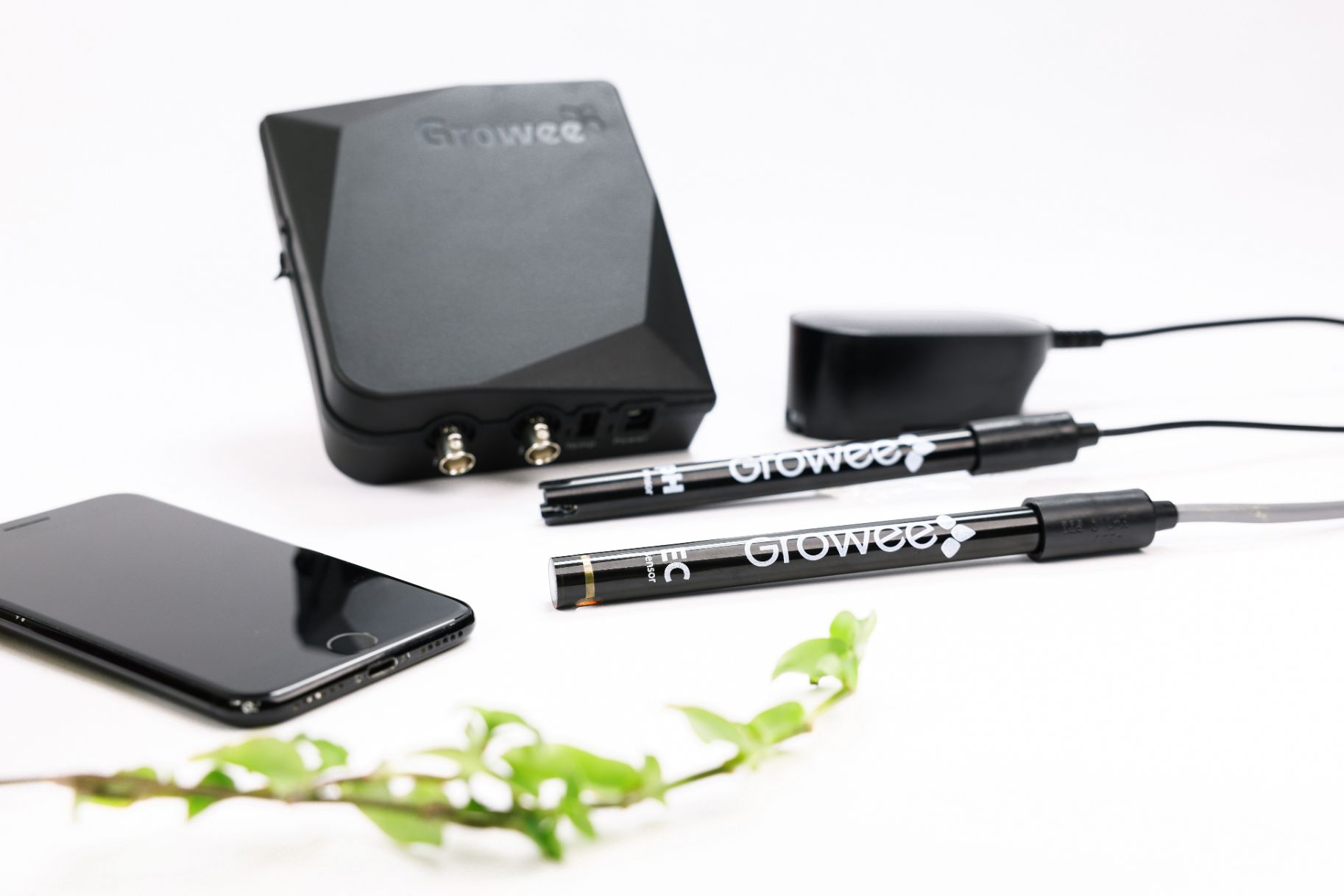Reverse osmosis (RO) systems are great for purifying tap water and making sure that no contaminants enter a hydroponic system. In this post, we’ll take a look at how the RO unit works, the best ways to use it with hydroponics systems, and some of the benefits of using R.O. water instead of tap water or other types of purified municipal sources.
What Does Water Do for Your Plants?
Water is the most important nutrient for your plants, but it can be contaminated by chemicals, heavy metals and other toxins. Reverse osmosis (RO) units remove these contaminants from your water before it enters your hydroponic system.
See How Growee Can Save You Time By Automating Your Plants Feeding
Water pH – Automated pH Up and Down Control
Nutrients Mixing – Automated Nutrient Dosing with Target EC / PPM Control.
Control From Anywhere – WiFi Connection and mobile App
Contamination Free Hydroponic System
With the reverse osmosis (RO) unit, you can be sure that no contamination enters your hydroponic system. R.O. water is free of contaminants like pesticides, heavy metals and other toxins commonly found in municipal water supplies. It’s also the best choice for hydroponics system because it doesn’t contain any impurities that could harm your plants—and they will definitely notice! You can rest assured that your plants will thrive on RO water and grow big and strong because they are getting everything they need to thrive: pure H2O with only the necessary minerals to speed up their vitality and growth cycle.

Automatic Dosing and pH Control.
While the reverse osmosis process itself is well-known, it’s not often used in hydroponic growing. It’s a great option for those who want to make sure their plants are getting the best possible water and nutrients ,using it as thr base liquid.
To do this, you’ll need to have an automatic dosing and pH control system. This will ensure that your plants get the right amount of nutrients at the right time. It will also ensure that they’re getting exactly what they need with no excess or deficiency .
Removing Heavy Metals, Pesticides and other Toxins From the Water Supply.
RO systems also remove heavy metals, pesticides and other toxins from the water supply. RO is used to purify water both for drinking (drinking water-although some minerals need to be reintroduced) and for use in hydroponics. Reverse osmosis may be used to purify water for use in aquariums.
Some manufacturers recommend using R.O. water for some time before making it your sole source of nutrients for plants. This allows the RO membranes to become conditioned, so the TDS (total dissolved solids) is reduced. In turn, this reduces the amount of minerals in your nutrient solution, which can help reduce plant stress and ultimately increase yields over time.
Also note that since RO water has a lower TDS than tap water, it may be better suited to starting new seeds, cuttings and clones compared to tap water. However if you are just starting out with hydroponics or just recently switched from tap water to RO then I’d recommend using half or 1/3 cup of TAP WATER in your reservoir until you get good results from doing so, especially if you’re growing indoors where humidity levels can be very low most times during winter months when air circulation is decreased due to lower outdoor temperatures combined with increased indoor heating demands by humans living inside buildings during colder weathers
RO filtered systems do have their limitations though! You’ll need additional nutrients such as calcium -magnesium {Cal-Mag for short} as these base minerals were extracted and are essential for the plant to succeed. Lower TDS waters are great for new seeds, cuttings and clones, though they may limit the amount of nutrients you can use in your main reservoir.
Reverse osmosis (RO) water is great for new seeds, cuttings and clones. RO water has a low TDS so it’s perfect for growing in hydroponic systems. The reason that the TDS of reverse osmosis water is so low is because of how it’s made: the main component of an RO system is a membrane, which only allows for certain elements to pass through it. This means that your plants can access all the minerals in your reservoir before they reach excess EC and toxic levels!
Monitoring the pH of your Base Water
When using an RO system for your hydroponic growing environment, aim for a pH reading of 5.5 to 6.5. If it’s too acidic, then it could kill some plants and if it’s too alkaline then it can also be harmful to some crops.
Use Reverse Osmosis (R.O.) water systems to remove Toxic C or Heavy Metals.
Many hydroponic system owners, however, use reverse osmosis (R.O.) water systems as a means of removing other contaminants, such as pesticides and nitrates—which can be harmful to plants.
The effectiveness of both filtration units and distillation units in achieving these goals is limited by their inability to remove dissolved solids from the water at all—and they often leave behind minerals that may negatively impact plant growth. While distillation removes everything but trace amounts of salts through boiling (which are usually negligible), most filtration methods only remove particulate matter from the water through a series of filters with varying levels of effectiveness based on size and thickness; these particles can become suspended in solution and lead to cloudy runoff as well as clog pumps over time leading them not only ineffective but highly inefficient when it comes to removing contaminants from large volumes of water quickly—especially those found in industrial applications where high pressure is needed for increased efficiency!
If you are looking for a way to make sure that your plants are receiving the cleanest, purest water possible, then R.O. systems are perfect for you! They remove all impurities and toxins from your water supply so that only purified water enters into the hydroponic system.

Growee, the Easiest and Most Efficient Way to Control the pH and EC of Your RO Water.
As you know, it’s important to make sure that the pH of your RO water is within a certain range. This is because too much or too little pH can cause problems for your plants. Growee makes this easy by automatically controlling your pH and nutrient levels based on the parameters you choose.
Growee also helps keep your plants healthy by adjusting the amount of nutrients that are dosed into the water according to what type of plants are being grown and what stage they’re at in their growth cycle.
Growee is an affordable, easy-to-use hydroponic controller for anyone who wants to grow more plants per square meter. It’s a great option for hobbyists, commercial growers and large scale operations alike. With Growee, you can have perfect control over your pH and EC levels and nutrient dosing needs—and the best part is that it’s completely hands-off! With just a few taps of your smartphone or tablet screen every day or week, you will never have to worry about losing track of how much water you’re using or when your plant needs feeding again.
FAQ
What Contaminants Are Removed in Reverse Osmosis?
Reverse osmosis is a water purification process that uses pressure to create a very fine membrane. Water passes through the membrane, but many contaminants are left behind. Reverse osmosis removes most of the harmful contaminants found in water, including arsenic and lead. Reverse osmosis also removes dissolved minerals such as magnesium, calcium, sodium and potassium.
What is a Good ppm For Reverse Osmosis Water?
Reverse osmosis systems use several filters, one that removes the finest contaminants and one that removes larger particles. This can be accomplished by using a filtration system with two stages of filtering of 1 micron each. The goal of this second stage is to remove as much unwanted solids to safely reduce the TDS (Total Dissolved Solids) in your water. The EPA recommends that reverse osmosis systems produce at least 0.5mg/L or 500 PPM (Parts Per Million) of TDS in their final output.
What is the pH of Reverse Osmosis Water?
The water produced by RO has a pH of 5 to 7, depending on the type of membrane filter used. This is similar to distilled water. There are no traces of minerals or chemicals in reverse osmosis water so it is basically safe to drink ,but requires replacing important lost minerals needed by humans.
Is Reverse Osmosis Water Healthy For me too?
Yes, reverse osmosis is a filtration method that removes up to 100% of contaminants from water. It’s also popular with people on a special diet {adding back needed minerals}, because it eliminates all types of chemicals, metals and minerals.
Is reverse osmosis water good for hydroponics?
Reverse osmosis water is a great solution for hydroponic gardening. It can be used as it is or with a few simple adjustments to get the added benefit of the trace minerals that are removed by the process of reverse osmosis.



